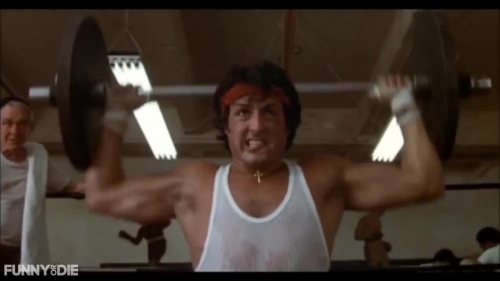And the Winner is: Quality
You move, constantly.
Currently, you’re breathing, and you’re reading. You’re also blinking, and probably fidgeting with your mouse. You didn’t make the decision to do any of this. It’s just happens.
Similar habitual patterns govern what you do, think, and feel in every other moment of existence. If you want to get better at doing something, first you require awareness of what you’re actually doing.
Awareness comes when you pay attention. To pay attention means to slow down.
We live in a culture that is frenetic, and consumed by measurement of all forms. These are times where the local gym offers ‘Quickie’ workouts in the race against time. Exercise is currently a lucrative sport where you compete to be the best. And strength and conditioning programs require a maths degree to understand.
Bigger, stronger, faster is all the rage. This is why the prospect of slowing down isn’t an option for most people. The issue with this way of being is that when numbers are the goal, there’s little room to consider how you are actually going about the business, and what it takes to do it better.
Quality is more elusive. It’s subtle, and can be found in the crevices of feeling and sensation. It can also be nurtured. In an environment geared toward curiosity over sheer will, like a seed, movement quality can develop, grow, and eventually flourish.
“Movement is life. Life is a process. Improve the quality of the process and you improve the quality of life itself.”
Back in the day, I experimented with the 5 x 5 program, with a goal of getting stronger.
Back squats were up. By the 5th set I’d be struggling, so I’d ramp up the volume of the Rocky soundtrack playing in my headphones, and I’d soldier on. When the going got tough, and it always did, I’d dig deep, scrunch my face, and push harder.
No pain, no gain, right?

Wrong.
The more I understand movement, the more I realise that quality is less about self-discipline and more about self-organisation.
Quality is:
- An exploration into different ways of doing something, in order to find that which feels best.
- The priority of comfort, over sets and reps.
- The flow of your breath.
- A sound connection of the many parts of your feet with the ground.
This isn’t as clear cut as quantity. Numbers aren’t always the nature of movement. When you seek to move with quality, you may do less, but you’ll do it better.
That’s as good a goal as any.
Further Reading
1. Haller, J. A New Definition of Strength – Practitioner Spotlight with Jeff Haller. Available at: https://www.achievingexcellence.com/blog/home/articles/articles_about/a-new-definition-of-strength-practitioner-spotlight-with-jeff-haller
2. Feldenkrais, M. 1985, The Potent Self. Frog Books, California.



